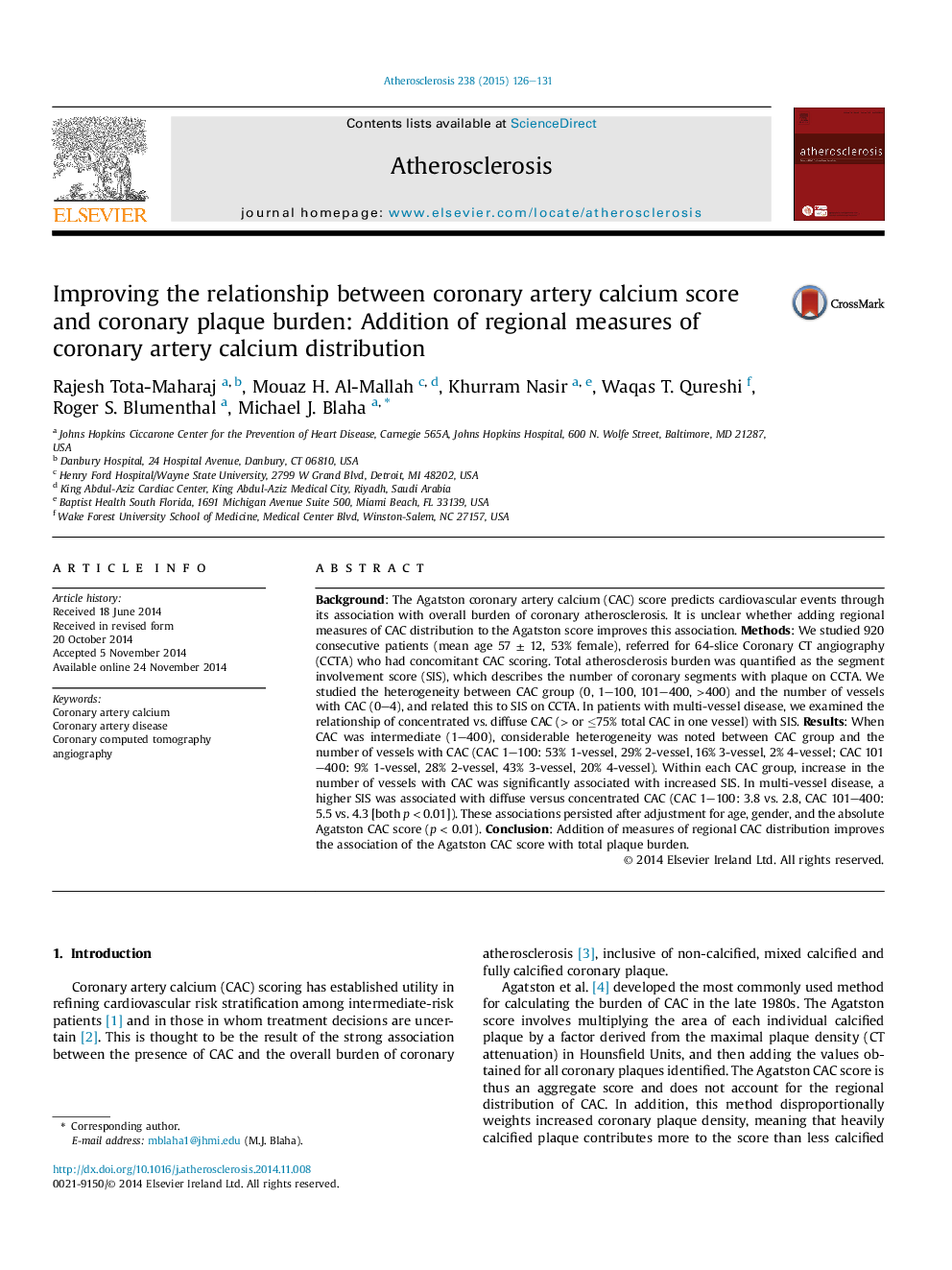| Article ID | Journal | Published Year | Pages | File Type |
|---|---|---|---|---|
| 5945715 | Atherosclerosis | 2015 | 6 Pages |
Abstract
Background: The Agatston coronary artery calcium (CAC) score predicts cardiovascular events through its association with overall burden of coronary atherosclerosis. It is unclear whether adding regional measures of CAC distribution to the Agatston score improves this association. Methods: We studied 920 consecutive patients (mean age 57 ± 12, 53% female), referred for 64-slice Coronary CT angiography (CCTA) who had concomitant CAC scoring. Total atherosclerosis burden was quantified as the segment involvement score (SIS), which describes the number of coronary segments with plaque on CCTA. We studied the heterogeneity between CAC group (0, 1-100, 101-400, >400) and the number of vessels with CAC (0-4), and related this to SIS on CCTA. In patients with multi-vessel disease, we examined the relationship of concentrated vs. diffuse CAC (> or â¤75% total CAC in one vessel) with SIS. Results: When CAC was intermediate (1-400), considerable heterogeneity was noted between CAC group and the number of vessels with CAC (CAC 1-100: 53% 1-vessel, 29% 2-vessel, 16% 3-vessel, 2% 4-vessel; CAC 101-400: 9% 1-vessel, 28% 2-vessel, 43% 3-vessel, 20% 4-vessel). Within each CAC group, increase in the number of vessels with CAC was significantly associated with increased SIS. In multi-vessel disease, a higher SIS was associated with diffuse versus concentrated CAC (CAC 1-100: 3.8 vs. 2.8, CAC 101-400: 5.5 vs. 4.3 [both p < 0.01]). These associations persisted after adjustment for age, gender, and the absolute Agatston CAC score (p < 0.01). Conclusion: Addition of measures of regional CAC distribution improves the association of the Agatston CAC score with total plaque burden.
Related Topics
Health Sciences
Medicine and Dentistry
Cardiology and Cardiovascular Medicine
Authors
Rajesh Tota-Maharaj, Mouaz H. Al-Mallah, Khurram Nasir, Waqas T. Qureshi, Roger S. Blumenthal, Michael J. Blaha,
